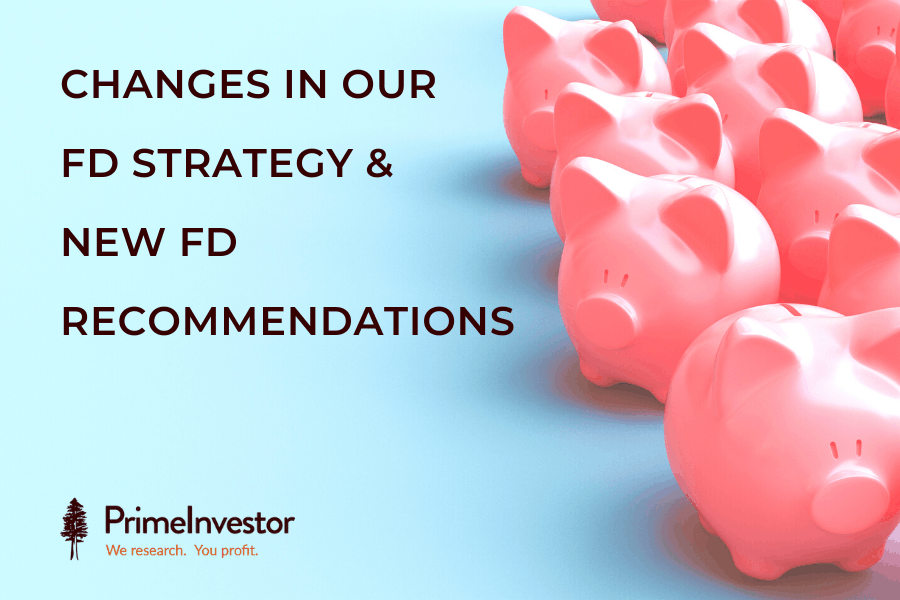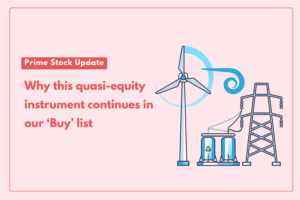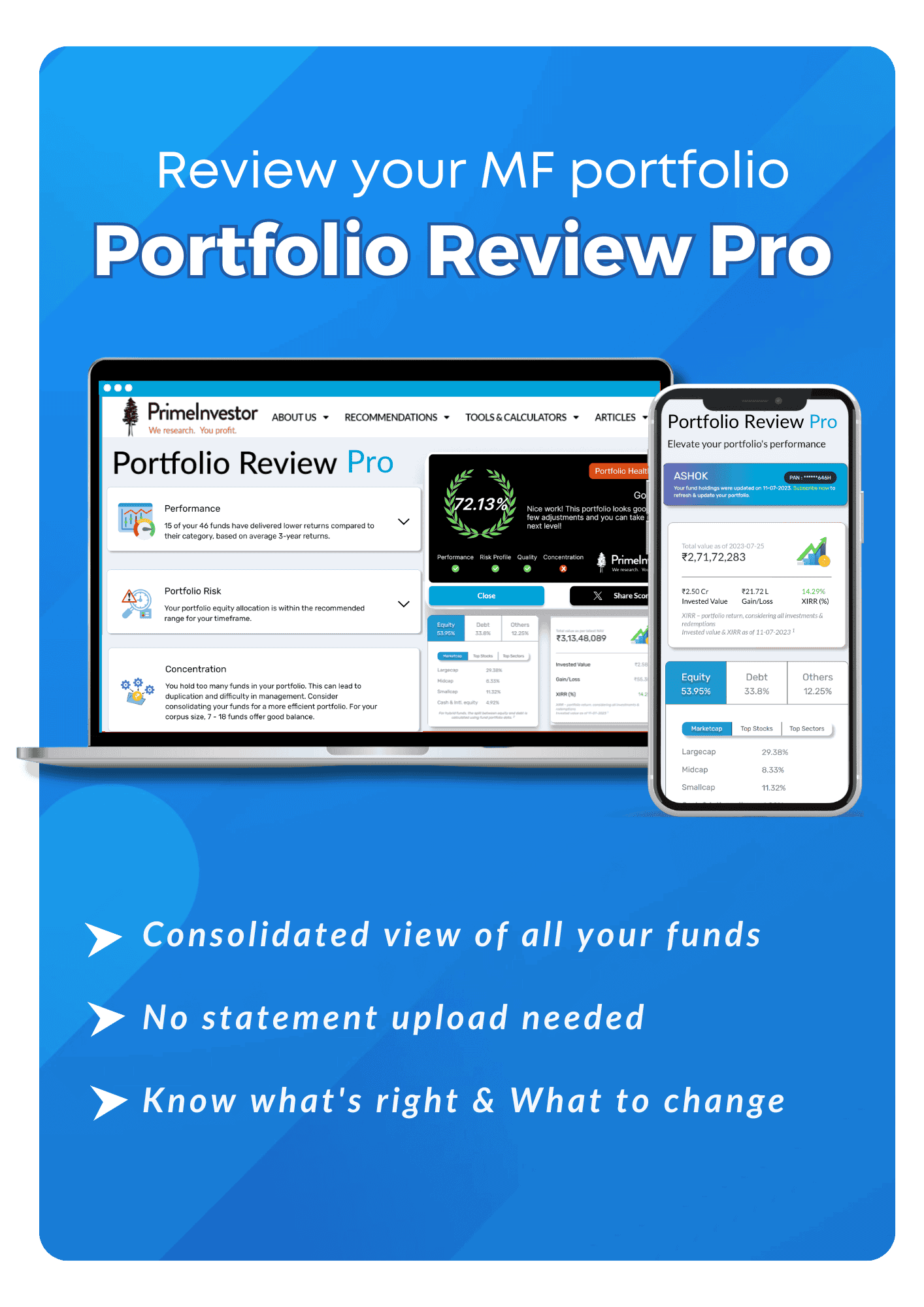“When facts change, it is best to change your mind.” It is not clear if this pragmatic statement was made by John Maynard Keynes or Winston Churchill. But it definitely applies to the world of investing where one needs to scout for the best opportunities after factoring in constantly changing asset prices, interest rates, macroeconomic conditions and regulations.

Three recent changes
In this review, our new FD recommendations in Prime Deposits are based on changed FD strategy. Our FD strategy change was triggered by three recent changes we saw in the macro/regulatory environment.
#1 Deposit insurance overhaul
India’s ineffective deposit insurance laws have undergone significant changes recently, with the DICGC (Deposit Insurance and Credit Guarantee Corporation) Amendment Act 2021 taking effect from September 1. You can find a more detailed explanation of this changed law in our earlier article.
Briefly, this law allows deposit insurance to kick in the moment a bank is put under ‘directions’ restricting withdrawals by RBI. It places the onus of insurance payouts on the DICGC and it sets a deadline of 90 days for DICGC to make these payouts. These changes give bank depositors greater confidence that the insurance cover of Rs 5 lakh per depositor in the case of banks running into financial trouble, will work more effectively from here on.
#2 Privatization drive
After regularly supporting them with recapitalization in the last few years, the Centre of late seems determined to cut its apron strings with Public Sector Banks (PSBs) as a part of its privatization drive. The policy regime is also being readied for the Centre to dilute its stakes in PSBs with an intent to restrict its majority ownership to just a few. It has already been staying off capital infusions and asking PSBs to resort to market issuances to shore up their capital.
With this shift, there’s nothing to stop investors from looking beyond PSBs or systemically important banks to improve the returns on their deposits.
This argues for breaking away from the perception that PSBs are always ‘safer’ places to deposit your money than private banks. It also puts FDs with public sector and private sector commercial banks, co-operative banks, small finance banks and regional rural banks on an equal footing when it comes to the extent of protection they offer their depositors. Should the bank flounder or come under RBI directions, depositors should expect to receive only Rs 5 lakh across all types of accounts he/she holds in the bank. Sums in excess of this, whether parked with PSBs or private banks or UCBs, may be only partly recovered based on the resolution process.
With this shift, there’s nothing to stop investors from looking beyond PSBs or systemically important banks to improve the returns on their deposits.
#3 Rates in limbo
On the macro front, while inflation – both global and Indian – is proving sticky, monetary authorities around the world are determined to ignore it and are dragging their feet on raising interest rates. India has been no exception, with RBI and MPC repeatedly refraining from raising policy rates and going with an ‘accommodative’ stance in their policy reviews. Additionally, RBI has been resorting to several artificial means (G-SAP being one) to keep g-sec yields low so that government borrowing costs remain under check. This has been delaying the inevitable rise in market interest rates, putting fixed income investors in a limbo.
As a result, while all conditions are in place for interest rates to rise, there’s a complete lack of clarity on when they will rise. This argues for minimizing the lock-in period on your term deposits, or going for deposit options with premature withdrawal facilities, so that you can capitalize on any rise in rates as and when it materializes. We recommend staying with 1 or 2-year deposit options right now.
Change in choices
The above factors have implications for the way you should go about selecting your FD options. Here’s how we suggest you approach them now.
As we explained above, recent deposit insurance changes open up investing opportunities for depositors across small finance banks (SFBs), new private sector banks and urban co-operative banks, which usually offer higher rates than PSBs or systemically important ones. How do you choose between these categories?
#1 Avoid UCBs
One, we recommend that in your hunt for better rates, you avoid the temptations of urban co-operative banks (UCBs) and go for small finance banks (SFBs).
After the string of co-operative bank failures in recent years which have brought to light their lax governance, politically connected management and doubtful lending practices, there has been a concerted regulatory push towards moving these banks into the RBI fold and loosening the State governments’ grip over them. There is also a move to raise the bar on prudential norms for UCBs, so that they either consolidate or convert to the tightly regulated Small Finance Banks. However, with over 1544 co-operative banks moved into the RBI fold, it is doubtful if RBI will be able to immediately step-up supervision of these banks and whip them into shape.
RBI may instead push for such banks to merge with each other or get taken over by healthier mainstream banks. With UCBs likely to be under regulatory pressure, depositors who seek them out for better rates are bound to face considerable uncertainty with regard to safety of their capital. The fact that UCBs are unlisted and not subject to the stringent quarterly disclosure norms of other listed commercial banks or small finance banks also prevent investors from getting early warning of impending trouble.
Yes, should such banks land in financial trouble or RBI pass directions on them, depositors will become eligible to receive insurance payouts upto Rs 5 lakh. But RBI may be cautious about placing too many UCBs under such restrictions given the DICGC’s limited ability to meet bunched up claims. This situation makes co-operative banks a very dicey bet still, for investors seeking worry-free deposits.
#2 SFBs score
SFBs, specialized banks that lend to riskier, small-ticket borrowers are relatively new kids on block in the banking space, but subject to very tight regulations with Rs 200 crore minimum net worth requirement, higher capital adequacy ratio of 15 % (versus 9% for commercial banks) and the requirement of mandatory listing if these banks cross Rs 500 crore minimum net worth. Being of relatively recent origin, these banks’ books are usually free of the baggage of legacy bad loans that UCBs or PSBs carry.
Yes, the default risks in SFB loans books have been rising post-Covid as their smaller-ticket borrowers have borne the brunt of the income and job losses brought on by the pandemic. The financial disclosures and granular loan book details these banks share every quarter include loan book, NPS situation, provision coverage and capital infusion cushions to absorb loan losses. These make it possible for investors to identify problems early and choose the better-placed SFBs. With the lifting of Covid related forbearance on NPA recognition, the published accounts of these banks have begun to reflect the quality of their loan books more realistically since the March quarter of FY22.
#3 No PSB preference
Earlier, depositors bet on deposits with PSU banks based on the vague belief that PSBs were ‘safer’ than private banks because they had ‘sovereign backing’. This allowed PSBs with double-digit NPA ratios, those under RBI’s PCA and those with capital adequacy ratios barely meeting the 9% norm to offer relatively low rates and still attract deposits. But this could change with the Centre announcing its intent of cutting PSB apron strings.
The hike in deposit insurance cover to Rs 5 lakh per depositor per bank also allows the Centre to treat all banks, PSBs included, alike when it comes to settling depositor claims. Therefore, investors can now choose their FDs based on the rates offered and financial strengths of individual banks, rather than going by their public or private ownership. If you find a new or relatively small private sector bank offering better deposit rates and great service compared to a PSB, you can run a check on its financial parameters and go in for its FD.
#4 NBFCs less attractive
With the clean-up of the deposit insurance framework and the hike in deposit insurance limits, deposits with banks now enjoy protection upto Rs 5 lakh per depositor even if the bank flounders or runs into financial stress. With NBFCs though, there is no such protection as they are not covered by the deposit insurance framework. This apart, the recent resolution plan for DHFL the failed housing finance giant, has put FD holders last in the pecking order of creditors eligible for partial recoveries.
In the DHFL case while NCD holders with upto a Rs 2 lakh investment are set to receive their claims in full and holders beyond that are set to receive 43% of their claims, FD holder as unsecured creditors are set to get only 23%, with no distinction between large and small depositors.
These two factors suggest that depositors need to be extremely careful in subscribing to deposit programmes from NBFCs. Yes, top-rated NBFCs with a long legacy of servicing FDs like Sundaram Finance or HDFC do make the cut. But they would be appealing only if they offered higher rates than banks, which now offer assured principal safety upto Rs 5 lakh.
Our FD recommendations and a unique FD tool
Given that you no longer need to stick to a handful of PSBs or systemically important banks for your deposits, how do you go about choosing the best banks for FDs?
While it may be tempting to just go for the ones with the highest rates, it is never a good idea to choose an investment option based on returns alone without considering the risks that go with it. To balance between risk and reward (and avoid uncertainties that go with a bank actually getting into trouble and needing insurance payouts), you should be looking for banks that combine sound financials with competitive rates.
To assess if a bank is sound or not, it is useful to run a check on latest size of its deposit base, recent deposit growth, CRAR ratio, GNPA and NNPA ratios, systemic importance and whether it is under RBI’s PCA framework.
Compiling such data every quarter can be a tough task for a depositor, prompting us to offer you two unique products:
- FD recommendations using Prime Deposits: You can simply go straight to our Prime Deposits section and pick out our recommendations of the banks that match your investment tenure of 12 months or 24 months. We’ve already put the financials of these recommended banks under the microscope and have arrived at a trade-off between their risks and rates. We have made substantial changes to our list in our new FD recommendations. Do check them.
- Check your bank’s health with our FD Tool: If you like to do your own due diligence on a bank you find attractive, then you’ll love our brand-new Bank FD tool. This allows you to rank banks on key parameters that can help compare them to each other. For your convenience, not only have we compiled all relevant parameters of the banks from their latest quarterly results at one place, we’ve also offered our qualitative opinion on whether PrimeInvestor has High, Medium or Low confidence in these banks. Check this tool here: https://www.primeinvestor.in/bank-fd-tool/ and your task of choosing FDs will get infinitely simpler.
While constructing your FD portfolio, don’t forget to follow these rules:
- Park your emergency fund or windfall gains where you prioritize capital safety in post office schemes and systemically important banks.
- Banks scoring ‘High’ on our confidence rankings should come next in your pecking order.
- Use FDs in SFBs or lower-rated banks as top-ups, to add a kicker to your returns from the above.
- Stick to 1 or at most 2-year tenures.
- Restrict your exposure to SFBs or banks ranked Medium or Low, to Rs 5 lakh per bank. This Rs 5 lakh limit is an umbrella limit that should apply to all types of accounts you hold in a bank- RDs, FDs, savings accounts – with both principal and interest being covered.









14 thoughts on “Changes in our FD strategy and new FD recommendations”
What is your take on some state govt. backed entities like Tamilnadu Transport Development Finance offering higher interest rates on deposits? How safe are they to invest?
The companies’ standalone financials are quite dicey but the State govt backing which helps them easily raise public deposits keeps them going. Would recommend investing a small portion of your portfolio if going for these entities.
Hi Aarati,
Question regarding sfb. Some of these sfbs offer 7 % for savings account vs 5-6% for FDs. Why are they offering higher in savings account where money can be withdrawn anytime vs FD with fixed tenure. Secondly wouldn’t savings account be better than the FDs recommended in your prime FD section. TIA for your reply.
It’s a very valid question Pulkit. I feel sfbs use high SB rates to attract new accounts but may discontinue the rates once they get sufficient balances. Plus such rates carry conditions like minimum balance of Rs 1 lakh etc. We suggest FDs because they allow you to lock into rates for a specific period without depending on the bank to retain rates.
Yes that’s true, many have reduced rates after a yr or so, makes sense. Thanks.
Hi,
One more question from me.
Is this insurance cover mandatory for banks ? I mean, can bank voluntarily decide not to pay insurance premium and take this cover, and hence it’s FDs remains unsecured ?
It’s mandatory. Every bank registered with RBI compulsorily pays premium to DICGC
Hi,
I am from Mumbai and frankly never heard of Equitas Small Finance bank or Surodaya Small finance banks. In case I wish to put FD here, do these banks have online FD creation facility ?
Further, I would prefer to do NEFT to these bank and get interest in my existing SB account only, hence can I put FD in these banks without opening another SB account with them ?
We suggest you check out their websites to gain confidence before investing. Yes they allow online FD opening. Not sure if they allow interest credit to another bank savings acct but they are likely to.
Hi,
They allow online FD, but the maximum for this route is only Rs.95000. For higher amount, one need to visit bank. They also accept other banks details for credit of interest & principle on maturity.
Thank you for the information.
In what instrument does bank invest to give us stable FD returns while debt funds still fluctuate..
They mostly give out loans. While some loans may be on floating rates, working capital loans, retail loans etc are mostly at fixed rates which allows them to give out a steady returns. Their loan yields are also substantially higher than what they pay depositors
Loved the new FD strategy. Thanks Aarthi.
Also wanted to check on IEX stock that was recommended in the watchlist. I do not see it now in the list. Any reason for its removal?
Comments are closed.